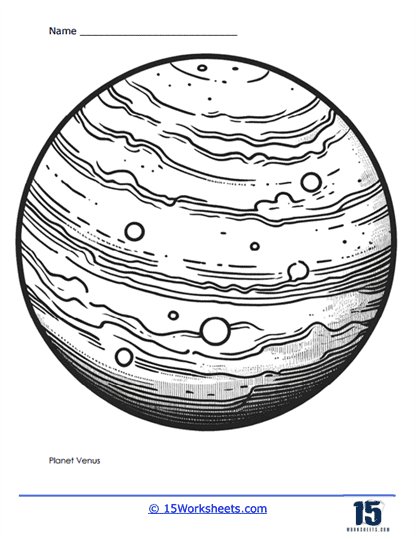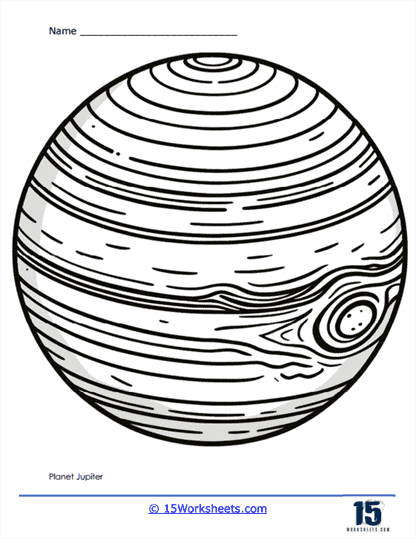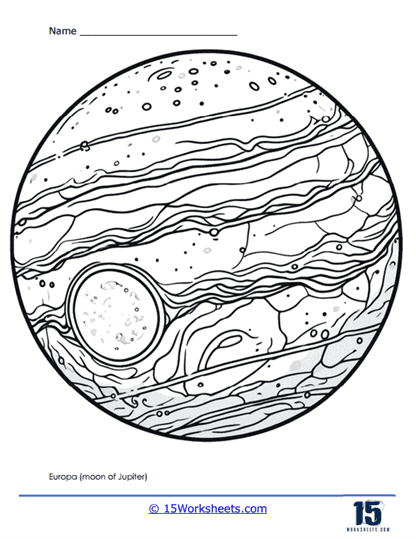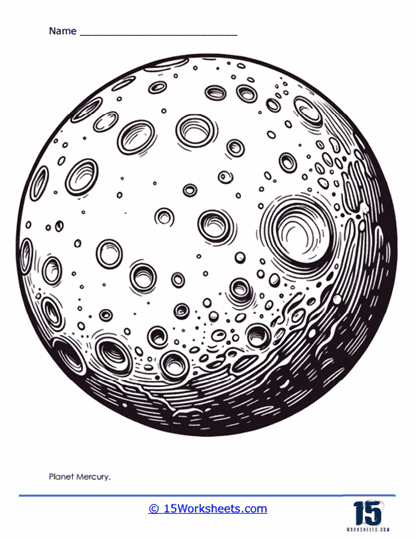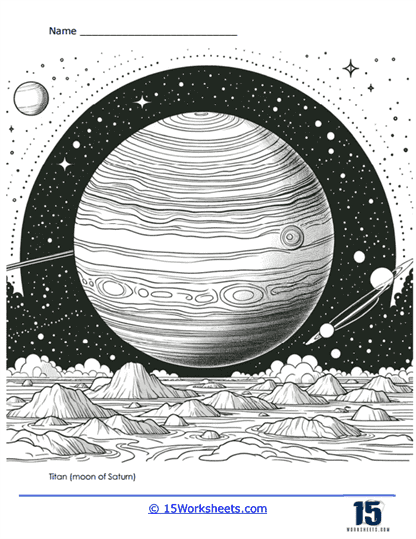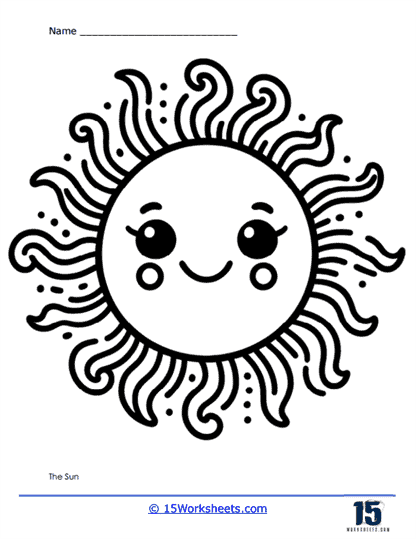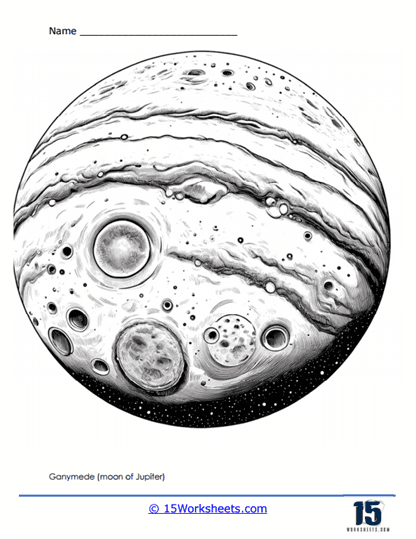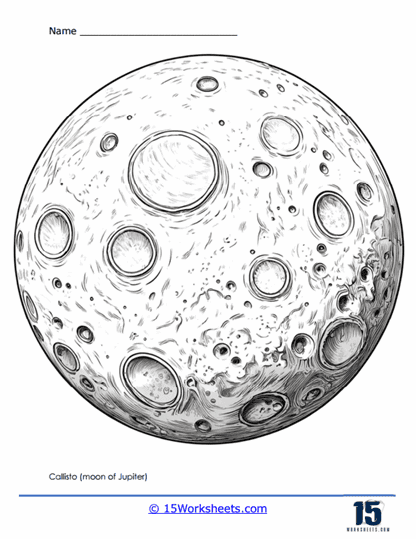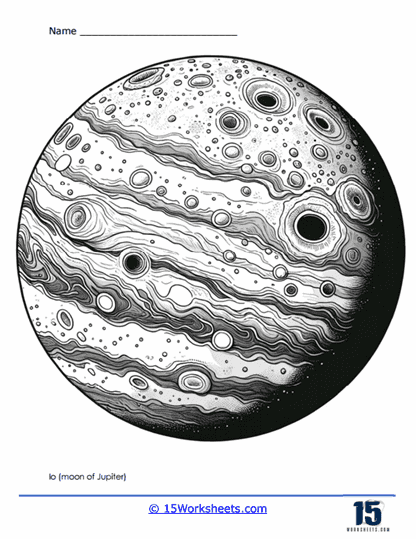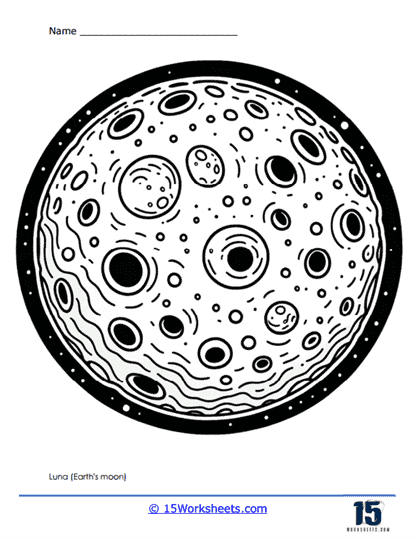Planets Worksheets
About These 15 Worksheets
This set of coloring pages are artistic representations that feature the planets and some of their moons in our solar system. These pages cater to a wide range of age groups, from young children to adults, and serve as an engaging way to learn about space while indulging in the creative process of coloring. Each planet and its associated moons present unique characteristics and features that can be vividly captured through coloring pages, providing an immersive experience that enhances one’s understanding of our solar system.
Starting with Mercury, the smallest planet and closest to the Sun, a typical coloring page would depict its cratered surface, resembling the Moon. One would expect to color various craters of different sizes, along with the planet’s grayish, rocky texture. Given Mercury’s lack of atmosphere, the page might also highlight the stark contrast between its sunlit and dark sides.
Venus, often called Earth’s twin due to its similar size and structure, presents a vastly different surface for coloring. A Venus-themed page would likely illustrate its thick, toxic atmosphere, depicted with swirling clouds of yellow and orange hues. The surface, obscured by these clouds, can be imagined with shades of brown and red, representing its volcanic plains and numerous mountains.
Earth, the most familiar of the planets, offers a vibrant palette for coloring. A typical Earth coloring page would feature the blue of its vast oceans, the green of its forests, and the white of polar ice caps and clouds. Major landmasses like continents and islands would be distinguishable, allowing colorers to explore Earth’s diverse geography. Additional elements might include representations of Earth’s atmosphere, such as auroras near the poles, showcasing shimmering greens and purples.
The Moon, Earth’s natural satellite, provides a contrast with its gray, cratered surface. A coloring page might detail the large maria, or lunar plains, as well as prominent craters like Tycho and Copernicus. The texture of the Moon’s rugged terrain would be an essential feature to bring out through shading and varying intensities of gray.
Mars, the red planet, is a favorite subject for coloring pages due to its distinct rusty hue. Pages dedicated to Mars would highlight its surface features, such as the towering Olympus Mons volcano and the vast Valles Marineris canyon system. Colorers might use different shades of red, orange, and brown to depict the planet’s dusty, rocky landscape. Additionally, the presence of polar ice caps could be illustrated with touches of white and light blue.
Jupiter, the largest planet in our solar system, offers a spectacular array of colors and patterns for a coloring page. The planet’s iconic Great Red Spot, a massive storm, would be a prominent feature, depicted with deep reds and swirling patterns. The bands of clouds in Jupiter’s atmosphere, ranging from white and yellow to brown and orange, would provide a dynamic and colorful scene. Jupiter’s moons, such as the volcanic Io, icy Europa, and the largest moon Ganymede, would also offer unique characteristics to color, from Io’s sulfuric yellows and reds to Europa’s smooth, icy surface with brownish cracks.
Saturn, known for its stunning ring system, would make a captivating coloring page. The rings themselves would be depicted with a range of colors from light yellow to white, with intricate patterns showing their structure. Saturn’s pale yellow and beige atmosphere, marked by subtle bands of clouds, would complement the vibrant rings. Coloring pages might also include some of Saturn’s moons, like Titan with its thick, orange atmosphere, and Enceladus with its bright, icy surface and geysers.
Uranus, the ice giant with its unique blue-green color, would be an interesting subject for a coloring page. The planet’s smooth, featureless appearance might be captured with gradients of cyan and turquoise, highlighting its methane-rich atmosphere. Uranus’s faint rings could be depicted with delicate shades of gray and white. The planet’s moons, such as Miranda with its varied and dramatic terrain, would add additional elements for coloring.
Neptune, the outermost planet in the solar system, is characterized by its deep blue color. A Neptune-themed coloring page would showcase the planet’s turbulent atmosphere with darker blue shades and white clouds indicating storm activity. Neptune’s largest moon, Triton, with its icy surface and geysers, could also be included, providing an interesting contrast with the deep blues of the planet.
Pluto, though reclassified as a dwarf planet, remains a fascinating subject for coloring. A Pluto coloring page would feature its mottled brown and white surface, with regions like the heart-shaped Tombaugh Regio offering distinct features to color. Pluto’s largest moon, Charon, might be shown with its gray and brown hues, adding depth to the depiction of this distant world.
In addition to the planets and moons, these coloring pages often include other elements of the solar system, such as comets, asteroids, and the Sun. The Sun would be depicted with its bright yellow and orange hues, radiating solar flares and sunspots. Comets, with their glowing comas and trailing tails, would be illustrated with bright whites and blues. Asteroids, with their irregular shapes and rocky surfaces, would offer more earthy tones for coloring.





